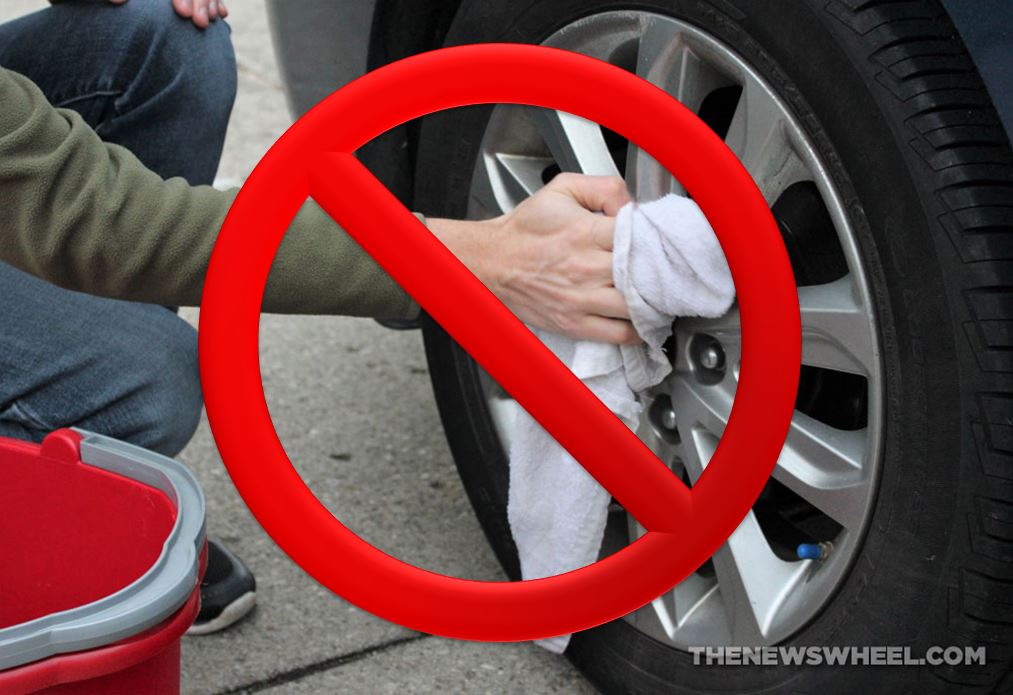Image credit: www.ratedradardetector.org
Its estimated that the average bi-weekly car washing session takes about an hour to complete. While some car owners invest more time, others look for quicker, faster, and more effective ways of detailing their rides. A hot topic these days is how to clean car wheels and rims efficiently – without screwing them up.
While quicker, faster, more efficient is typically a good thing, some methods and products used with wheel cleaning can damage brake system components if used incorrectly or too often. And that’s never a good thing, especially on a performance car.
This introduces the topic today – how to PROPERLY clean car wheels and rims. In the information below, we’ll outline a few of the recommended ways to clean the wheels on your ride. We’ll also explain some of the pros and cons of using some iron and fall out removers for cleaning your wheels.
Two Ways to Clean Car WheelsDo you remember your old man saying, “there are two ways of doing something – my way or the highway. ” Well my dad was a bit more articulate than that. He’d say, “if you’re going to do something – do it right, by using the right tool for the right job.”
I find that his wisdom is quite applicable for washing tires and wheels.
There are indeed two different ways of washing your rims – a quick and easy method (usually using a standalone chemical spray product – letting it sit – then spraying off) or the best way (involving the use of automotive soaps or wheel cleaner sprays, special brushes, and some elbow grease).
Explaining the Different Type of Spray Wheel CleanersNot all wheel cleaning agents are identically formulated. In fact, many of them are night and day. Let’s explain some of the common types of wheel cleaning agents used by detailers and DIY car enthusiasts.
Acid-Based Wheel Cleaners
It’s well understood that wheel cleaners with formulations to the left of the pH scale are highly effective at breaking down grime and other stuff coated on wheels.
They are not exceptionally acidic, most of them falling around 5.5 to 6 on the pH scale (with 7 being pH neutral). However, even a pH of 5.5 can be harmful or cause damage to certain types of wheels – like alloy’s or those that are chrome plated.
Dedicated pH Neutral Wheel Cleaners
The largest percentage of wheel cleaning agents used by consumers today are dedicated wheel cleaners. These typically contain pH neutral Wheel Cleaning agents. They work by breaking down brake dust, road grime through agitation after being sprayed on the surface. Most of them include foaming agents and surfactants designed to lift and remove debris.
Iron and Fallout Removers
The final classification of spray on wheel cleaners is what’s referred to as an iron or fallout removal spray. This is usually a pH neutral formulation that is safe to use on paint clear coating, wheels, and other metallic components. It’s not safe to use on plastic or vinyl components, due to the aggressive nature of some of its ingredients.
Although the spray is pH neutral, once it is activated with ferrous-based substances (like brake dust), it begins to change to an aggressive base (or the right side of the pH scale). As such, it’s a product that shouldn’t be used in direct sunlight, on warm surfaces, and especially not on any trim components.
How Does Iron and Fallout Removers Work?Most of these sprays will change colors when it begins to break down iron or ferrous substances. So, what is this magic ingredient? Well – it’s the same stuff that makes these products smell like the back end of a skunk.
It’s called Ammonium Mercaptoacetate or Ammonium Thioglycolate. It’s typically colorless or has a light pink hue – but literally smells repulsive. It’s also known as perm salt. Here is why. It’s also used as the primary chemical that your grandma used at the hair salon to get her hair permed.
So, how does this stuff work? It’s rather simple – when you realize that it’s not just your granny’s perm acid that does the job. It’s the combination of four ingredients – Citric Acid – Ammonia – Thioglycolic Acid – Iron.
It’s the combination of four ingredients – Citric Acid – Ammonia – Thioglycolic Acid – Iron.
When these ingredients combine, it creates a chemical reaction, which creates ferric thioglycolate (this is the purple or red color you see that “shows it’s working”). Basically, it’s accelerating the process of rusting or oxidation. It transforms Wustite (which is the root mineral found in iron ore) into Ferric Oxide (yup – RUST).
This introduces a rather interesting conundrum. What happens when this stuff is sprayed onto your wheels – or specifically, those iron-based brake components behind the wheels?
Well – it literally starts to break down the ferrous ingredients on the rotors, pads, and other components – just like it breaks down brake dust and other ferrous substances on the wheels.
While this process is reduced when you spray it off with fresh water – it’s not 100% complete. To completely remove this type of spray from any substance is to use an automotive soap or shampoo after using the iron remover.
To completely remove this type of spray from any substance is to use an automotive soap or shampoo after using the iron remover.
That said, IF you are going to use an iron or fallout removal spray on wheels – make sure to follow that up quickly with using a car shampoo or degreaser, to stop the chemical reaction which could damage brake components.
The Right Way to Clean WheelsSo, what’s the right way to clean wheels and tires? Well, like most maintenance projects, using the right products, tools, and methods typically leads to optimal results and reduced potential for damage.
Prepare Your Supplies
The first step in cleaning wheels is to collect the right supplies. While each wheel design or material is unique, there are some general cleaning supplies you can use for all types.
A microfiber wash “wand” is a great tool for cleaning wheels.A dedicated wash bucket and supplies for wheel cleaning: The primary substance that coats wheels of all types is brake dust. As we all know, brakes are made of metallic or ferrous substances.
As we all know, brakes are made of metallic or ferrous substances.
When you use the same wash bucket, microfiber wash mitt, or detailing brushes to wash wheels and your other parts of the vehicle, you significantly increase the potential of scratching sensitive areas – like paint, chrome, and more.
The supplies you want to collect for wheels include:
Once you collect your supplies, here are four easy steps for cleaning all types of wheels – from custom alloy to powder coated.
In a perfect world, using a high-pressure washer is the optimal method for washing wheels. This is due to the excessive water pressure, that can help to loosen baked on contaminants.
If you don’t have a high-pressure washer, use a spray nozzle attached to your hose to apply copious amounts of pressurized water to remove as much loose stuff as possible.
It’s crucial to follow the EXACT instructions for using any wheel spray cleaning agent. Some formulations are simple spray, let sit, rinse off – and others require agitation with a wheel cleaning brush (which is why we added that in the supplies).
Either way, if you use a spray-on wheel cleaning chemical, make sure to follow their instructions – from start to finish. This includes spraying off the chemical.
Wheel cleaning chemicals might be “safe” for use, but you don’t want them to stay on the wheel surface – especially if you’ve got chrome or alloy wheels. As such, we’d recommend using an automotive specific car washing soap or shampoo.
For those with ceramic coated wheels, use a pH neutral, wax-free shampoo that is formulated to clean ceramic coated surfaces – without leaving a wax film. Many car shampoos that contain wax will significantly reduce the hydrophobic effect of the coating.
Many car shampoos that contain wax will significantly reduce the hydrophobic effect of the coating.
If you don’t have a ceramic coating, use a wax-stripping or decontamination car wash shampoo. This will help to remove the chemical residue left on the wheels, leaving them as clean as possible.
When you’ve completed the steps above, rinse the wheels, on the outside, inside and the wheel well. It’s quite possible that during this process, soap or debris has been splattered onto suspension or brake parts, even the paint on the body.
When your wheels are clean, use separate supplies to wash the rest of your ride.
Washing your wheels every time you clean your car is the best way to reduce brake dust build-up. If you’re going to use Iron Removal or aggressive chemical cleaner, make sure to wash that stuff off with a high-quality car washing shampoo. This will keep your wheels clean and reduce the potential of chemical damage.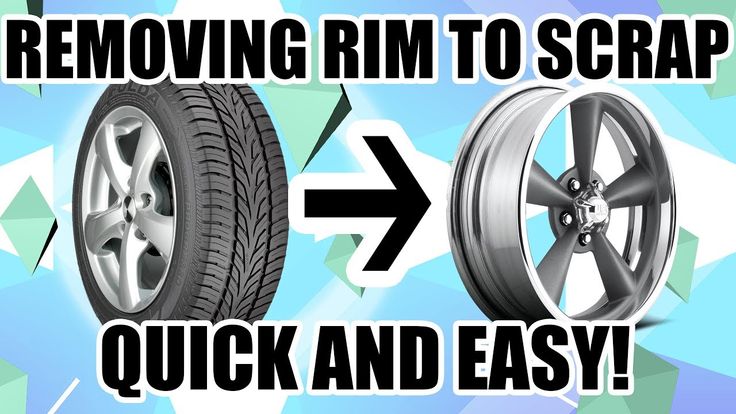
Of course, applying a DIY nano ceramic coating on your wheels makes clean-up simple. You’ll reduce the potential of brake dust sticking to the rims, which reduces the need for harmful chemical cleaners in the first place.
Car wheels are among the filthiest car components. They collect dust, dirt, grease, and grime—you name it. Aside from accumulating into nasty buildups, they can interfere with your car’s performance and make rides less enjoyable.
Therefore, it is very important that you pay enough attention and invest time and effort into taking care of them. To do that, you should know how to clean car wheels and rims.
Even though you may be tempted to just simply blast a stream of high-pressure water to wash them, this is not enough. There are other steps that you must take to clean rims and tires properly.
In general, the steps to clean car rims at home are:
You can learn the details and other essential information on cleaning wheels as you read. So, what are you waiting for? Go on! Below, you will find the best way to clean car wheels and rims.
So, what are you waiting for? Go on! Below, you will find the best way to clean car wheels and rims.
Table of Contents
You have to gather the following materials:
Among the materials listed above, you have to be a bit more selective with the wheel cleaner and wheel cleaning brush.
First, for wheel cleaners, it is incredibly important that you spend time researching before you make your final purchasing decision. There are many wheel cleaners available in the market. So, it is not a problem to find them. But you must consider various factors to find the right one for you: formula, ease of application, brand, and price.
Generally, the best wheel cleaner features a safe formula that is eco-friendly and biodegradable. It is usually stocked in an ergonomically designed spray bottle for easy application. Plus, it is made by well-known brands that have been in the niche auto industry for a long time, and most wheel cleaners like this have a price range from $8 to $20.
Apart from that, your cleaner of choice should come with straightforward, clear instructions on how to use and apply. If the directions are wishy-washy, choose a different cleaner.
To give you a head start, take a look at these top-tier options: Adam’s Wheel Cleaner, Meguiar’s G180132 Ultimate All Wheel Cleaner, and CAR GUYS Wheel Cleaner.
Second, for wheel cleaning brushes, it is necessary that you find one specifically made for working with tires. Once you begin your brush shopping endeavor, you may be surprised by how many types are available in the market. Make sure you have researched adequately before picking one up at a local store or an e-commerce site.
A good quality wheel cleaning brush should have soft but stiff bristles that are safe for delicate surfaces: matte, painted, polished, chrome, etc. In addition, there should be a long handle for easy gripping and maneuvering. Typically, you can get a decent wheel cleaning brush for $30 to $40.
Here are a few reliable options that you can consider if you are unsure of where to start: Mothers Wheel Brush and Tire Cleaner, VIKING Microfiber Metal Free Rim and Wheel Brush, and Chemical Guys ACC602 Extended Reach Wheel Brush.
What You Will Need to DoStep 1: Turn off your car and check if the tires are ready to be cleanedFirst, you need to switch off your car and check that the tires are cool to touch.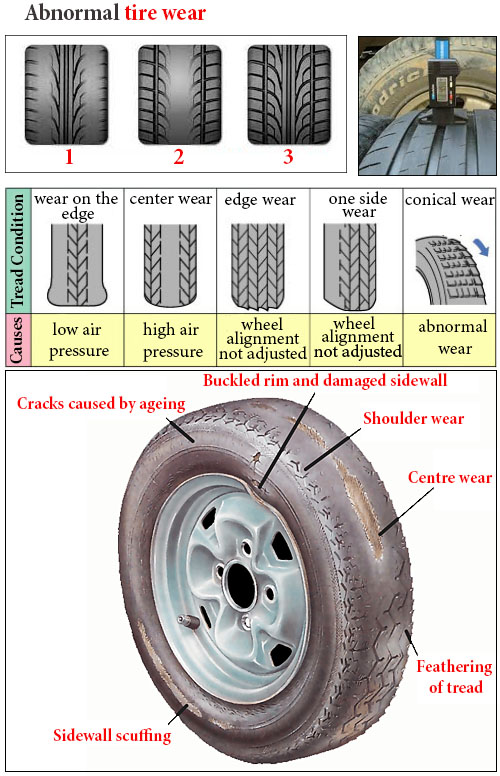 If not, wait until it is no longer hot or warm before moving onto the next step.
If not, wait until it is no longer hot or warm before moving onto the next step.
Second, grab your garden hose and use it to spray the wheels caked with filth. Make sure that the water stream coming out of the hose is high pressure. Otherwise, it will not be enough to force out the gunks. Spray thoroughly to get rid of as much loose filth as possible. The more you can remove at this point, the easier it will be for you later.
Step 3: Apply the wheel cleaner as guided in the descriptionsThird, apply the wheel cleaner that you have prepared. Make sure that you use it as guided. Each product will have specific instructions on proper use. Some cleaners will have to sit for a few minutes while others will be ready for scrubbing right away. Do not deviate from the directions on your cleaner’s descriptions or packaging.
Step 4: Scrub the wheel and rims with a brush in circular motionsFourth, scrub. Use a wheel cleaning brush and circular motions. Do this carefully, as well as not forget to reach all the nooks and crannies.
Use a wheel cleaning brush and circular motions. Do this carefully, as well as not forget to reach all the nooks and crannies.
Fifth, wash the cleaning solution away. Use the same high-pressure hose from the first step. Check that there are no residues. Most cleaners contain chemicals that should not stay on your wheels and rims for too long. Therefore, be meticulous and make sure that the tires are hosed down completely.
Step 6: Scrub the wheels and rims thoroughly with a DIY solutionSixth, give your wheels and rims another wash with a DIY solution. In a bucket, mix water and car washing soap. Then, soak a microfiber towel in the solution and use it to scrub. Again, do this with circular motions. Start from the outer edge of the rims and work your way inwards. Take the time to scrub thoroughly, especially the crevices.
When you notice that the towel is collecting dust, dirt, grease, or grime, rinse it and re-soak it in the solution to continue scrubbing. Repeat this step as many times as needed until you are sure that the tires are free of filth.
Repeat this step as many times as needed until you are sure that the tires are free of filth.
Top Tip: You can use a toothbrush to scrub the hard-to-reach areas.
Step 7: Rinse the wheels and wash off all the soapSeventh, rinse the just-scrubbed wheels and rims using the high-pressure hose. Clear out all the soapy lather on the outside and inside of the tires. Only proceed to the next step when you are guaranteed that they are clean.
Residues can cause etching and potentially damage the materials of your tires. Remember, better safe than sorry! Triple check to make sure.
Step 8: Dry all the wheels and rims completelyEighth, let it drip dry for two to three minutes. Then, use a fresh, dry microfiber towel to pat it dry. You may have to use several towels to finish this step for all four tires. It is slightly time-consuming but surely rest assured that the outcome is rewarding.
Step 9: Coat a protective layer to prevent future filthNinth, apply a protective coating on your wheels and rims to complete. This prevents filth from clinging onto your tires. Thus, it will ensure that your next cleaning session is more time-saving and less tedious.
This prevents filth from clinging onto your tires. Thus, it will ensure that your next cleaning session is more time-saving and less tedious.
So, there you have it! Congratulations on reading through all the steps in the best way to clean car rims and wheels. Now, you can apply what you have read. It was not as difficult as you thought, right?
ConclusionAs you have read, there is more to cleaning car tires than blasting them with high-pressure water. There are materials that you need to prepare and steps that must be carried out with care. Reading about how to clean car wheels and rims is the first step. Next, you have to put what you have read into practice.
Just remember, there are nine steps to take, starting from turning off your car and checking if they are ready for cleaning, to drying them off and coating a protective layer to prevent future filth.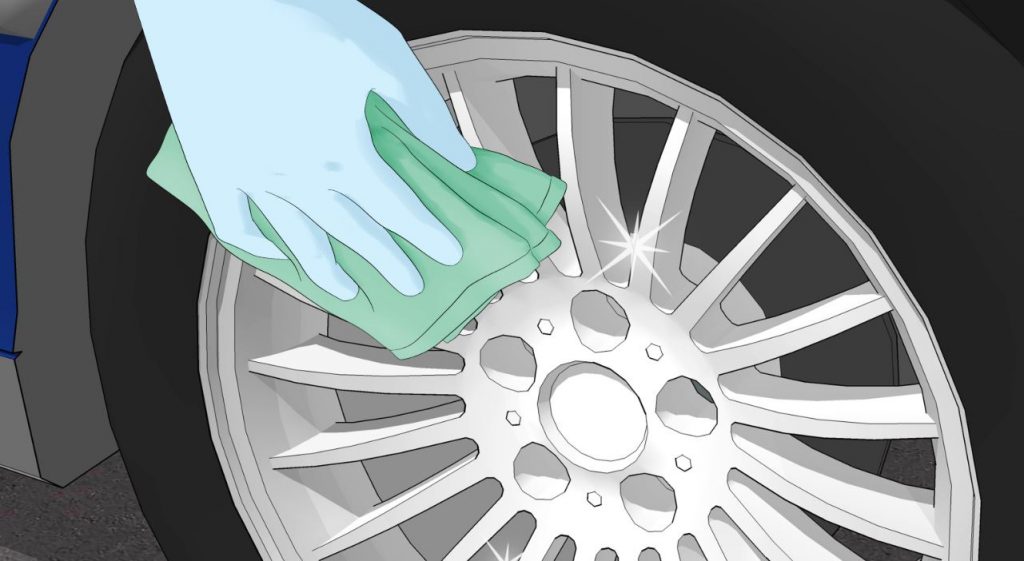
But feel free to bookmark this article so you can refer back to it whenever you need to.
After you have tried this yourself, share the experience with us in the comments. If you have questions or thoughts, you are welcome to leave a comment as well.
Do not forget to share this article’s content with your friends, family, or any car owners you know will appreciate the content!
Article reading time: 3 minutes
Save to bookmarks
The right technology and the right detergents will help get rid of brake dust and gravel stuck in the tread, improving the safety of the car, driver and passengers.
How to wash tires we will tell in this article.
To clean the wheels from dirt, dust and oil residues, you will have to act according to the following plan:
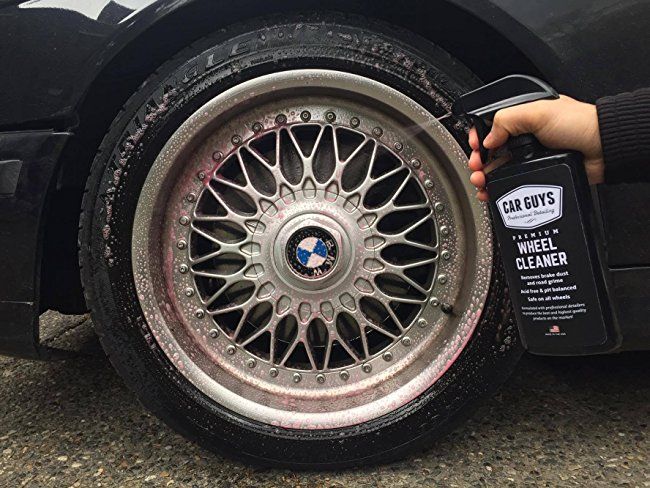
In the final, the wheel is applied with a protector that protects the tires from the harmful effects of ultraviolet radiation.
To clean dried-on dirt from rims and wheels, you will need a machine that generates high-pressure water.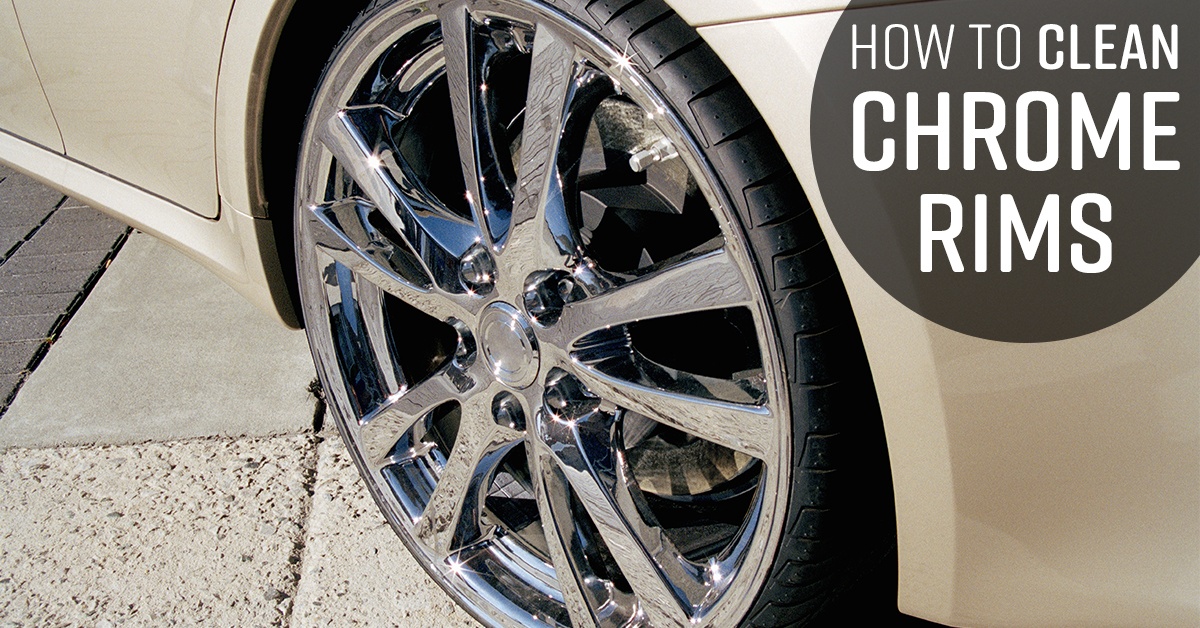 Such installations are produced by American and European companies, so they are quite expensive, but they can be replaced with an ordinary hose and a special nozzle that accelerates the water jet to a pressure sufficient to clean the car.
Such installations are produced by American and European companies, so they are quite expensive, but they can be replaced with an ordinary hose and a special nozzle that accelerates the water jet to a pressure sufficient to clean the car.
To remove residual dirt, you will need a medium-hard bristle brush and a cleaning solution that is used to treat wheels and rims. This solution can be prepared from household chemicals found in the kitchen or bathroom, or bought at an automotive store. Moreover, store products are divided into universal foam cleaners and solutions based on weak acids, which can only process car rims. By the way, if you don’t know how to wipe rubber off a car, try this solution.
To wash the wheels of cleaning products, you need the same high-pressure apparatus or a hose with a nozzle. But as a napkin that will wipe off the remaining water, you need to use only clean microfiber from the package.
Winter Drive protection
Tires Goodyear UltraGrip Arctic 2 SUV
Winter Drive Protection Sound Comfort
Rating:
4. 5
5
Tires Goodyear UltraGrip Ice 2
Winter Drive protection
Tires Goodyear UltraGrip Performance+ SUV
Winter Drive protection
Tires Goodyear UltraGrip Arctic 2
Winter Drive Protection Run On Flat Sound Comfort
Tires Goodyear UltraGrip Performance+
To prepare a solution that can clean dirt from tires, dilute in a small amount of water to half a standard bottle of dishwashing detergent. Pour the resulting concentrate into a container into which it is convenient to dip a car brush. Thanks to the abundance of surfactants found in dish detergent, a homemade solution will clean tires as well as a factory cleaner.
Pour the resulting concentrate into a container into which it is convenient to dip a car brush. Thanks to the abundance of surfactants found in dish detergent, a homemade solution will clean tires as well as a factory cleaner.
Rules for the use of home remedies that can clean wheels are similar to the recommendations of manufacturers of commercial drugs. Before treating tires and rims with home remedies, make sure you wash the tires. Otherwise, brake dust and gravel residues will turn into abrasive particles that can scratch the tread when you scrub it off dirt with a brush or sponge. Do not try to clean the wheel with an old cloth that has been used to clean the engine compartment or bodywork - it will stain the wheel with oil or gasoline.
Article author: The Goodyear team
Popular related articles
Tire regrooving
(
Updated:
27/07/2020
)
Which tires are better: narrow or wide?
(
Updated:
27/07/2020
)
How are tires tested?
(
Updated:
27/07/2020
)
How and why to blacken rubber?
(
Updated:
27/07/2020
)
Does the braking distance depend on the tires?
(
Updated:
27/07/2020
)
Proper break-in of studded tires
(
Updated:
24/01/2022
)
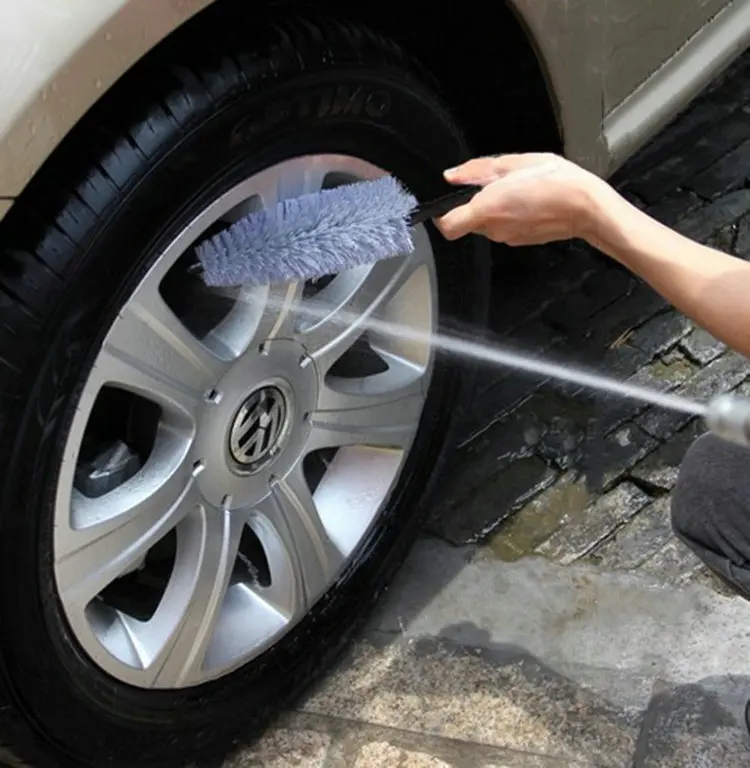 Inexpensive! — magazine Behind the wheel
Inexpensive! — magazine Behind the wheel LADA
UAZ
Kia
Hyundai
Renault
Toyota
Volkswagen
Skoda
Nissan
GAZ
BMW
Mercedes-Benz
Mitsbishi
Mazda
Ford
We are pronounced. everything can be recommended for use.
Related materials
5 cool and inexpensive Chinese car ideas for autumn
You don't have to go to a car wash or a spare parts store to get your tires back to a deep black color. You can get by with improvised means, and some of them are sure to be found in almost every home.
There are several ways to blacken tires that are safe and do not affect traction. In the absence of special means for restoring color, for example, shoe polish, glycerin, silicone oil, and even laundry soap and household chemicals are used. Each substance has its pros and cons, but it should be remembered that none of them fully possesses the qualities inherent in special solutions: neither long-term effect, nor protective properties, nor ease of use.
Related materials
11 factors that the driver needs to remember in the fall
Blackening tires with shoe polish or other shoe care product is the first thing that comes to mind. At the same time, the processing process itself is no different, only instead of a brush it is better to use a sponge so that splashes of shoe polish do not stain the body. We simply rub the sidewall of the washed and dried tire with shoe polish and let it dry.
To be honest, the result does not look very good, even when using the product with wax: there is neither shine nor color depth. The application process itself is also inconvenient - imagine what it would be like to process four wheels. The downside is that you have to wait for the shoe polish to dry completely before driving. Otherwise, road dust will quickly stick to the treated surface, reducing all the efforts made to nothing. Of course, there are also quick-drying paint creams, but their cost is such that it will still be cheaper to buy a special product for blackening tires.
Due to its consistency, glycerin creates a stunning jet-black shiny tire effect, and the degree of "greatness" can be adjusted by diluting the product with plain water. For one procedure, only one hundred grams of glycerin and the same amount of water are enough. We mix them, taking into account the fact that the less water in the composition, the more "fat" the effect will be. But it’s better not to spare water, otherwise dust will stick to the tires, as in the case of wet shoe polish. The composition is applied with a simple sponge without rubbing. By the way, unpainted black plastic body parts can also be processed with this compound.
The advantage of this method is its low cost and the availability of glycerin in any pharmacy. The disadvantages overlap all the advantages: glycerin quickly ages rubber, causing it to crack. In addition, the composition is very well washed off with water - the very first rain or driving through a puddle will not leave a trace of glycerin. In dry weather, tires will only stay black for a couple of days.
In dry weather, tires will only stay black for a couple of days.
Related materials
How to sit behind the wheel - check your fit
Blackening tires with silicone oil is not the cheapest way because it is not sold in small containers and you will have to buy an annual supply of funds right away. This method is the simplest, most efficient and less labor-intensive than the others. It is better to use medium viscosity oil, which will also come in handy for treating tires before winter or summer storage - this is the only substance described that somehow protects rubber from cracking, drying out, ultraviolet radiation and moisture.
The effect after treatment with silicone oil is long-lasting and the tires look blacker than new. Silicone oil is also treated with door seals and trunk lids so that they do not freeze.
Laundry soap is perhaps the cheapest product suitable for blackening tires.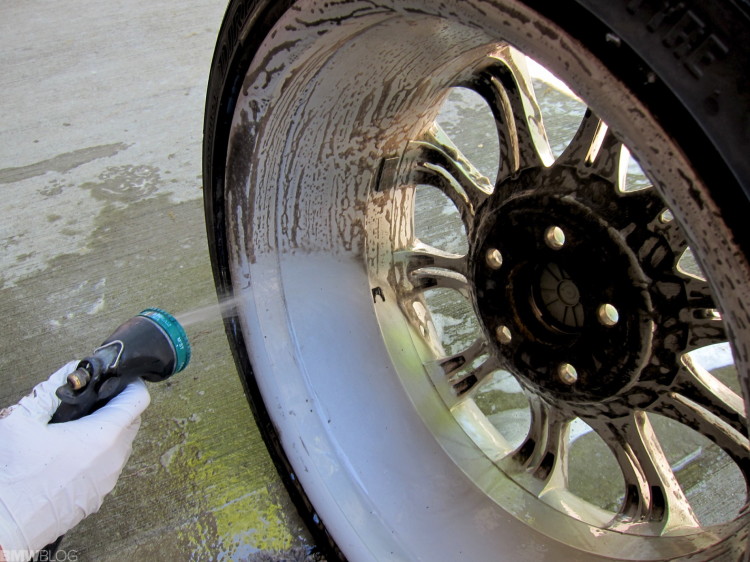 It can be applied with a pre-soaped brush, or by dissolving a crumb of soap in water, apply the composition with a sponge. There is no need to rinse off the soap: when it dries, the rubber will acquire a beautiful and deep black tint. Like most artisanal methods, blackening tires with laundry soap has its drawbacks. Rubber because of it, as in the case of glycerin, ages faster and may begin to crack, so we do not recommend this method of blackening.
It can be applied with a pre-soaped brush, or by dissolving a crumb of soap in water, apply the composition with a sponge. There is no need to rinse off the soap: when it dries, the rubber will acquire a beautiful and deep black tint. Like most artisanal methods, blackening tires with laundry soap has its drawbacks. Rubber because of it, as in the case of glycerin, ages faster and may begin to crack, so we do not recommend this method of blackening.
Related materials
Preparing the car for winter: what needs to be done first
Household chemicals are often used in car washes. This is a cheap, effective and harmless method for rubber and its adhesion to an expensive method, which can be offered as a bonus or "gift". It is mainly used for washing glasses, as well as dishes. The first is sprayed onto the sidewall of the tire and rubbed quickly, while the second is applied with a damp sponge. It is not necessary to wash off the compositions.
Also on the forums it is advised to blacken tires with drinks. More often than others, Coca-Cola is mentioned. But because of the sugar in the composition of the cola, it creates a sticky layer, on which dust quickly settles, and is easily washed off in the first puddle.
***
All of the listed products, of course, are inferior to the special compounds sold in auto chemical departments. Their blackening effect is short-lived and does not look so beautiful. In addition, most of them can harm rubber by affecting its chemical composition and reducing its service life. Nevertheless, the described methods are in demand due to their availability and spontaneity, because most motorists do not need to blacken tires every day.
However, the safest alternatives to professional tire blackeners are silicone and household chemicals. The latter is usually also cheaper.
Photo: depositphotos.